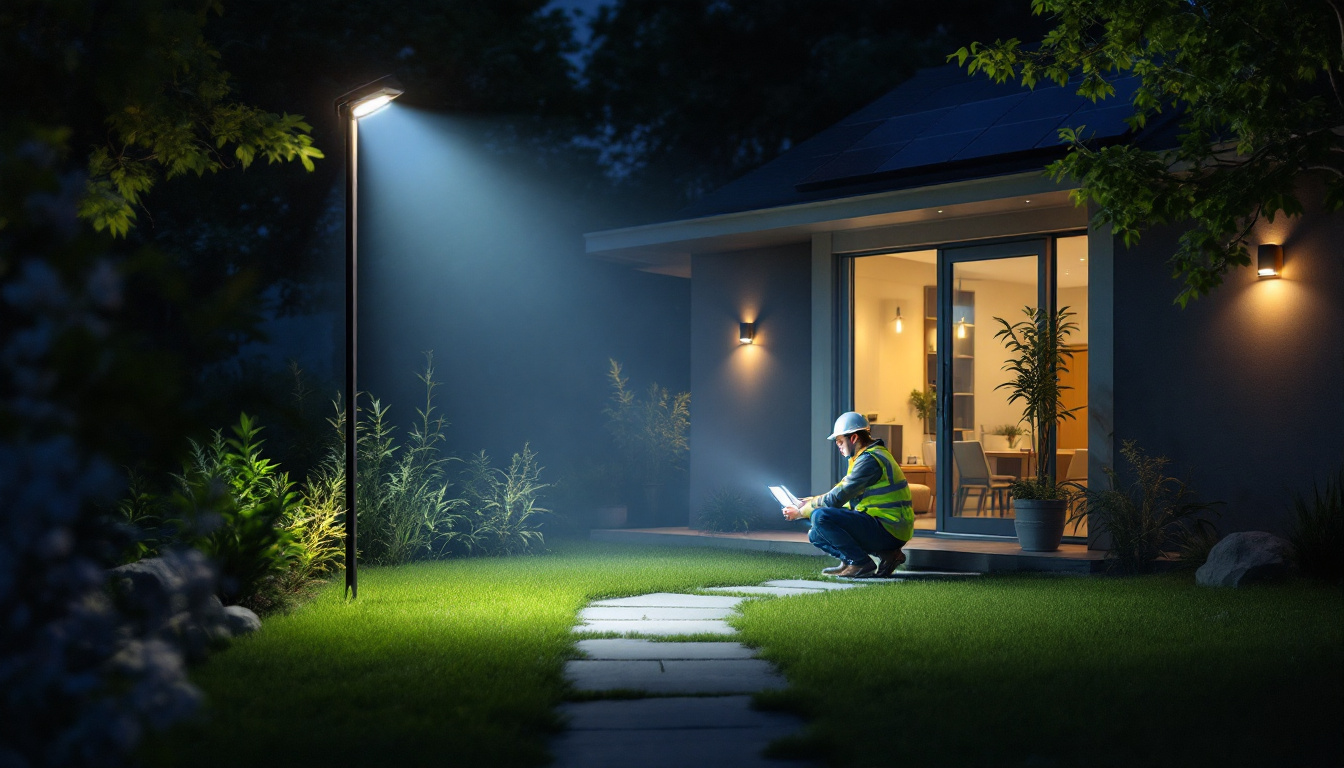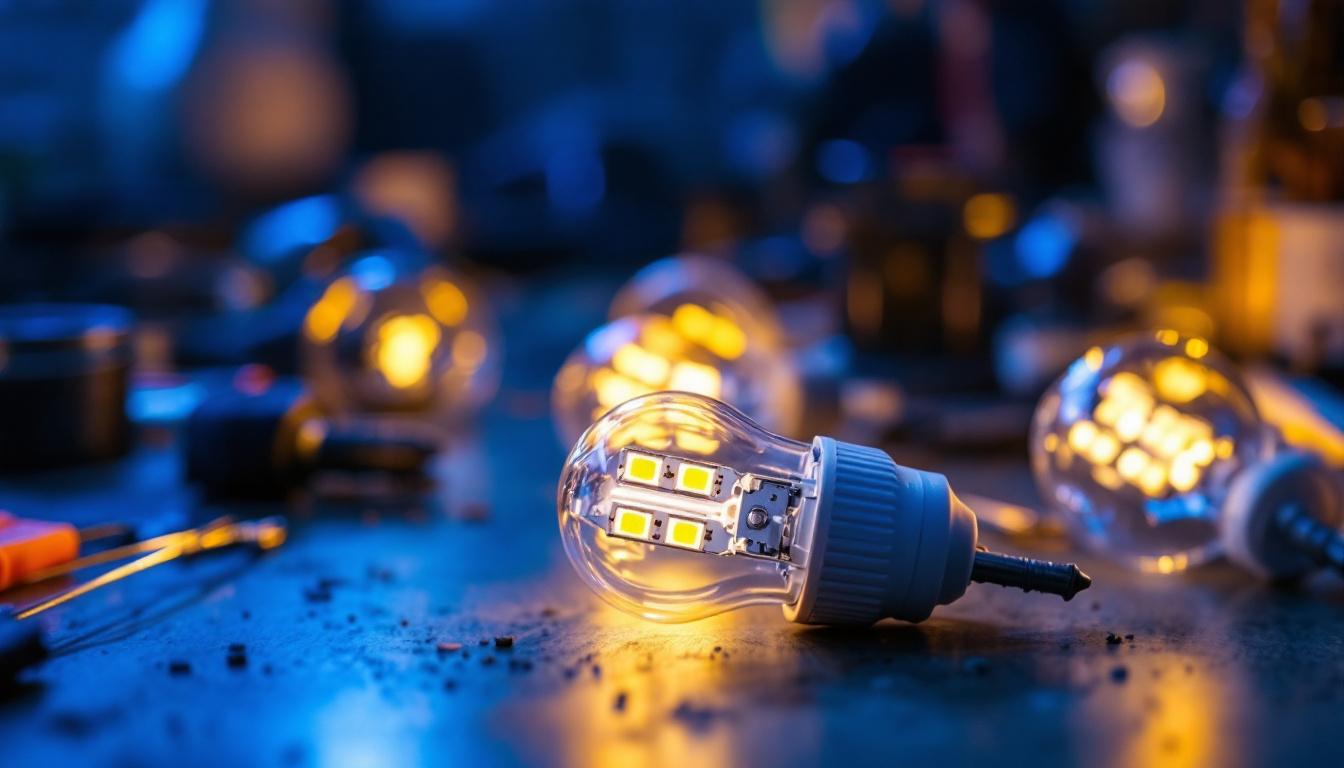
As the demand for energy-efficient lighting solutions continues to grow, outdoor solar flood lights have become increasingly popular among homeowners and businesses alike. However, lighting contractors often encounter a variety of challenges when installing these systems. Understanding the common mistakes made in the process can help improve project outcomes and client satisfaction. This article delves into the typical pitfalls associated with outdoor solar flood lights and offers insights on how to avoid them.
Before diving into installation practices, it is essential to grasp the fundamentals of solar technology. Solar flood lights operate by converting sunlight into electricity through photovoltaic cells, which power LED lights. This technology not only reduces energy costs but also minimizes environmental impact. Solar energy is a renewable resource, making it an increasingly popular choice for both residential and commercial applications. The efficiency of solar technology has improved significantly over the years, allowing for more compact designs that can fit into various settings while still providing ample lighting.
One of the most critical aspects of installing solar flood lights is the placement of the solar panels. Many contractors fail to assess the optimal positioning, which can lead to inadequate sunlight exposure. Ideally, solar panels should be placed in areas that receive direct sunlight for most of the day. Shadows from trees, buildings, or other obstructions can significantly reduce the efficiency of the lights. Furthermore, the angle of the solar panels can also impact their performance; tilting them towards the sun can maximize energy absorption, especially in regions with varying sun angles throughout the year.
Contractors should conduct a thorough site assessment before installation. This involves analyzing the sun’s path throughout the day, considering seasonal changes, and identifying potential obstructions. By ensuring that solar panels are installed in the best possible location, contractors can enhance the performance and longevity of the flood lights. Additionally, it may be beneficial to incorporate adjustable mounts that allow for repositioning the panels as needed, adapting to changes in the environment or landscaping over time.
Another common mistake is underestimating the importance of battery capacity. The battery stores the energy collected by the solar panel and powers the flood lights during the night. If the battery is too small, it may not hold enough charge to keep the lights operational throughout the night, especially during cloudy days or in winter months when sunlight is limited. Understanding the specific energy needs of the flood lights is crucial, as this will guide the selection of a battery that can provide adequate power without frequent recharging.
Contractors should select batteries with adequate capacity based on the expected usage and the wattage of the flood lights. Additionally, it is crucial to consider the battery type, as some batteries perform better in extreme temperatures than others. Lithium-ion batteries, for example, tend to have a longer lifespan and better efficiency compared to traditional lead-acid batteries. By choosing the right battery, contractors can ensure that the lights function reliably, regardless of weather conditions. Moreover, implementing a monitoring system can help track battery performance and energy consumption, allowing for timely maintenance or upgrades when necessary.
The installation process for solar flood lights can be straightforward, but it is essential to follow best practices to avoid common errors. Poor installation techniques can lead to malfunctioning lights and dissatisfied clients. Understanding the nuances of installation can make a significant difference in the performance and longevity of the solar flood lights.
One frequent oversight is the mounting height of the flood lights. If the lights are installed too high, they may not provide adequate illumination for the intended area. Conversely, if they are mounted too low, they can be easily obstructed or damaged. Finding the right balance is key.
As a guideline, flood lights should generally be mounted at a height that allows them to cover the desired area effectively while minimizing glare. Contractors should also consider the beam angle and the specific lighting needs of the space. Taking the time to determine the optimal mounting height can significantly improve the effectiveness of the lighting installation. Additionally, environmental factors such as nearby trees or buildings should be assessed, as they can cast shadows or block light, further influencing the ideal placement of the lights.
While solar flood lights are designed to be low-maintenance, contractors must still pay attention to wiring and connections during installation. Poorly connected wires can lead to power loss or even system failure. Additionally, exposure to the elements can cause corrosion or damage to connections over time.
To avoid these issues, contractors should use high-quality connectors and ensure that all wiring is properly insulated and secured. Regular maintenance checks can also help identify potential issues before they escalate, ensuring that the lighting system remains functional and efficient. Furthermore, it is advisable to plan the wiring layout in advance, considering factors such as the distance from the solar panel to the lights and the potential for future expansions. This foresight can save time and resources in the long run, allowing for a more seamless installation process.
The market for outdoor solar flood lights is vast, with numerous options available. However, not all products are created equal, and selecting the wrong ones can lead to disappointing results.
One of the most significant mistakes contractors make is opting for low-quality solar flood lights to save on costs. While budget-friendly options may seem appealing, they often lack the durability and performance needed for long-term use. Low-quality lights may have inferior materials, leading to faster wear and tear, and may not provide adequate brightness or coverage.
Investing in reputable brands and high-quality products can pay off in the long run. Contractors should prioritize lights that offer reliable performance, good warranties, and positive customer reviews. By selecting quality products, contractors can enhance their reputation and foster client trust. Additionally, high-quality solar flood lights often come equipped with advanced features such as motion sensors, adjustable brightness settings, and longer battery life, which can significantly improve the functionality and efficiency of the lighting solution.
Another critical aspect often overlooked is compliance with local regulations. Different regions may have specific guidelines regarding outdoor lighting, including restrictions on brightness levels, light pollution, and installation practices. Ignoring these regulations can result in fines or the need for costly adjustments.
Contractors should familiarize themselves with local laws and regulations before commencing any installation project. This not only ensures compliance but also helps in designing lighting solutions that meet client needs while adhering to community standards. Furthermore, understanding these regulations can provide contractors with an edge in the competitive market, as they can offer tailored solutions that respect local guidelines while maximizing the aesthetic appeal and functionality of the outdoor space. Engaging with local authorities or industry associations can also provide valuable insights into upcoming changes in regulations, allowing contractors to stay ahead of the curve.
Even the best-installed solar flood lights require maintenance to ensure optimal performance. However, many contractors neglect this aspect, leading to long-term issues.
One common oversight is failing to establish a maintenance plan for the solar flood lights. Regular maintenance is essential to keep the lights functioning efficiently and to prolong their lifespan. This includes cleaning solar panels, checking battery health, and inspecting wiring and connections.
Contractors should educate clients about the importance of maintenance and provide them with a clear plan. This can include seasonal checks, cleaning schedules, and tips for troubleshooting common issues. By promoting a proactive approach to maintenance, contractors can enhance client satisfaction and reduce the likelihood of future problems. Additionally, incorporating technology such as monitoring apps can help clients track the performance of their solar flood lights in real-time, allowing for quicker identification of any issues that may arise. These tools can also send alerts when maintenance is due, ensuring that the lights remain in optimal condition throughout their lifespan.
Providing ongoing support to clients after installation is crucial for building long-term relationships. Many contractors fail to offer adequate customer support, leaving clients feeling abandoned once the project is completed. This can lead to frustration and a lack of trust in the contractor’s services.
Establishing a robust customer support system can set a contractor apart from the competition. This can include offering warranties, providing contact information for troubleshooting, and being responsive to client inquiries. By maintaining open lines of communication, contractors can foster loyalty and encourage repeat business. Furthermore, offering educational resources such as FAQs, instructional videos, and maintenance guides on a dedicated website can empower clients to handle minor issues independently. This not only enhances the client experience but also demonstrates the contractor’s commitment to their satisfaction and the longevity of their investment in solar flood lighting.
Outdoor solar flood lights offer an excellent opportunity for lighting contractors to provide energy-efficient solutions to clients. However, avoiding common mistakes during the installation process is crucial for ensuring successful outcomes. From understanding solar technology and selecting quality products to implementing proper installation techniques and maintenance plans, attention to detail can make all the difference.
By learning from these common pitfalls, contractors can enhance their skills, improve client satisfaction, and ultimately grow their businesses. Investing time and effort into understanding the intricacies of solar flood lights will not only benefit contractors but also contribute to a more sustainable future for all.
Ready to elevate your lighting projects with the best solar flood lights on the market? Look no further than LumenWholesale, where we provide contractors with superior, spec-grade lighting products at unbeatable wholesale prices. Say goodbye to local distributor markups and hello to our extensive selection that meets the highest industry standards. With LumenWholesale, you get the reliability and performance you need, plus the convenience of free shipping on bulk orders. Don’t compromise on quality or value; Wholesale Lighting at the Best Value is just a click away. Make the smart choice for your business and your clients today!

Discover essential tips for selecting two-pin LED light bulbs and learn how to sidestep common pitfalls in your lighting projects.

Discover essential tips and expert advice for lighting contractors on selecting and installing light tube bulbs.

Discover why lighting contractors should prioritize wall sconce lighting indoors.

Discover the frequent pitfalls lighting contractors encounter when installing toggle light switches.